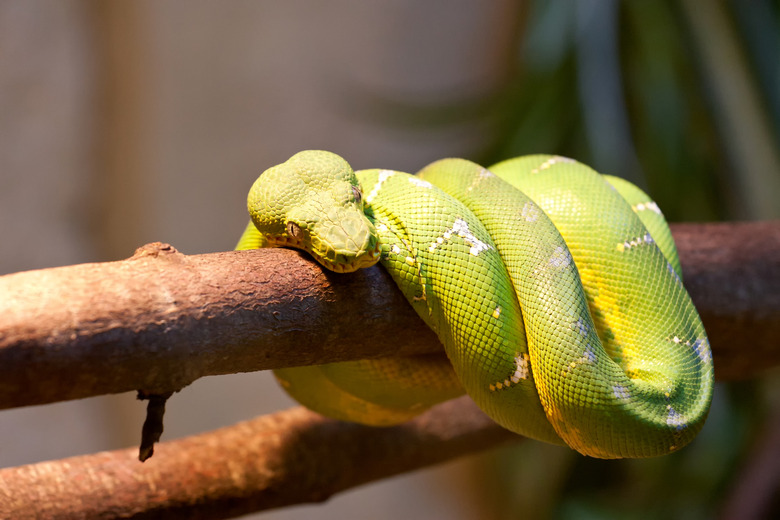Examples Of Evolutionary Adaptation
Adaptation, in evolutionary terms, is the process that species go through in order to become accustomed to an environment. Over many generations, through the process of natural selection, organisms' physical and behavioral features adapt to function better in the face of environmental challenges. Adaptations are slow and incremental, and the result of successful adaptation is always beneficial to an organism.
TL;DR (Too Long; Didn't Read)
Adaptation, in evolutionary terms, is the process that species go through in order to become accustomed to an environment. Over many generations, through the process of natural selection, organisms' physical and behavioral features adapt to function better in the face of environmental challenges. Adaptations are slow and incremental, and the result of successful adaptation is always beneficial to an organism. Snakes lost their legs to fit into underground spaces, mice grew large ears to hear predators at night, and giraffes developed long necks to reach the leaves on tall trees and bend down to drink water. Vestigial organs are by-products of evolutionary adaptations that are no longer useful in a species' environment, and are not considered adaptations.
Snakes And Legs
Snakes And Legs
Before snakes slithered, they had limbs similar to those of lizards. To better adapt to their environment of small holes in the ground, they lost their legs. Without legs, snakes were able to fit into a tighter space in which they could hide from predators. The first species of snakes existed at a time when most reptiles didn't go above the ground for their prey, but burrowed around in search of food, so this adaptation was particularly helpful. Modern boas and pythons actually still have small stubs where their legs used to be millions of years ago.
Mice And Large Ears
Mice And Large Ears
Mice have very large ears as a result of evolutionary adaptation. Mice are nocturnal creatures, meaning they are primarily active at night, but they do not have night vision. Instead, they adapted to activity in the dark by developing incredible hearing capabilities. Mice can hear oncoming predators earlier than they could without their relatively large ears. Coupled with their quickness, mice can use their heightened auditory senses to escape from a snake or bird of prey before it is too late. Compared with the small ears of rats, it's easy to see why one animal is a quick and nimble forest-dweller, while the other is more of a lumbering scavenger that relies in part on human garbage.
Giraffes And Long Necks
Giraffes And Long Necks
One of the textbook examples of evolutionary adaptation is the long-necked giraffe. The evolution of the giraffe's long neck occurred so that the animal could reach leaves in taller trees. But the story of giraffe's long necks is even more complex than that. Giraffes have very long legs, but they do not bend their knees. In order to to drink from a pool of water, they require a long neck that can reach all the way down to the water. In addition to reaching tall leaves and low water, giraffes' neck length is useful for many purposes, including spars between males.
Vestigial Structures
Vestigial Structures
A vestigial structure is a feature of an organism's body that was once an adaptation shaped by natural selection, but which is no longer useful in their current environment. For example, some species of fish that live in completely dark caves have eyes, although their eyes cannot see and serve no function. Their ancestors who first came to the caves had eyes that they used to swim in sunlit water, and although those eyes were once adaptations to see, they are no longer necessary or useful. Scientists do not define these types of structures as adaptations. They were once adaptations, but once they become useless and vestigial, they are not a benefit to the species, and they have not appeared by the pressures of the environment and natural selection.
Cite This Article
MLA
Hershey, Arlen. "Examples Of Evolutionary Adaptation" sciencing.com, https://www.sciencing.com/examples-evolutionary-adaptation-6131133/. 19 April 2018.
APA
Hershey, Arlen. (2018, April 19). Examples Of Evolutionary Adaptation. sciencing.com. Retrieved from https://www.sciencing.com/examples-evolutionary-adaptation-6131133/
Chicago
Hershey, Arlen. Examples Of Evolutionary Adaptation last modified August 30, 2022. https://www.sciencing.com/examples-evolutionary-adaptation-6131133/
